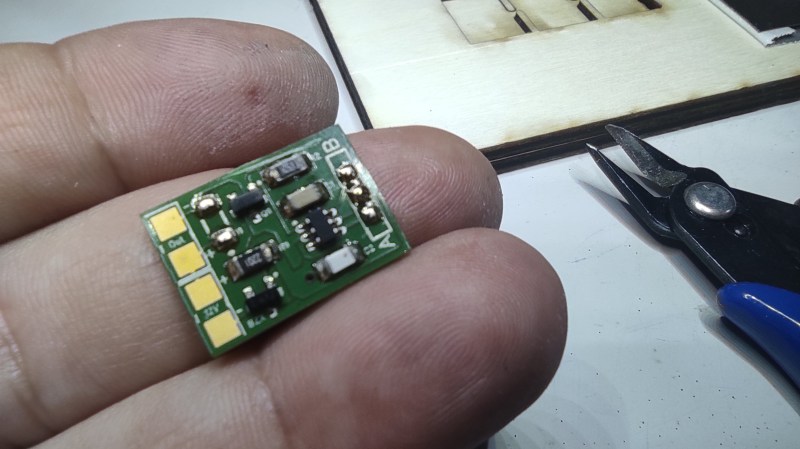You can buy small modules with capacitive touch detection ICs — most often it’s the TTP223, a single-button capacitive model with configurable output modes. These are designed to pair with a microcontroller or some simple logic-level input, but [Alain Mauer] wanted was to bring touch control to a simple LED strip. Not to be set deterred, he’s put together a simple TTP223-based switch board.
Initially, he made a prototype using one of the regular TTP223 boards as a module, but then transferred the full schematic onto a single PCB. The final board uses an NPN transistor capable of handling up to 3 amps to do the switching job, and Zener-based regulation to provide 5 V for the TTP223 itself from the 12 V input. [Alain] shares the schematic, as well as BOM together with Gerber files for a 2×3 panel in case you’re interested in adding a few of these handy boards to your parts bin.
The TTP223 is a ubiquitous and quite capable chip – we’ve seen it used for building a mouse with low actuation force buttons, a soft power switch, and even a UV-sensing talisman that’s equal parts miniature electronics and fascinating metalwork.















Are there advantages to using a zener here? Lower noise for the captouch than a regulator?
It was the simplest and smallest solution to get the 12V under 5V
Nice, high five!
That’s a great chip for touch sensing. It will even work through wood and other nonconducting surfaces. I recall seeing a project somewhere (?) where it was used for a “secret-invisible” combination lock for a drawer.
Hi. I think ttn223 is a clone of attiny10 (which natively support qtouch library)
Sorry, I mean ttp223 a clone of attiny10
hmm that’s interesting! the attiny10 is a full-blown MCU, whereas the TTP223 is a single-purpose chip; they do come in the same package, but that’s where the similarities end for me? I’d like to learn more about why you believe this to be the case!